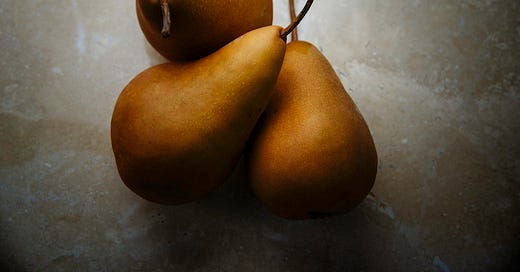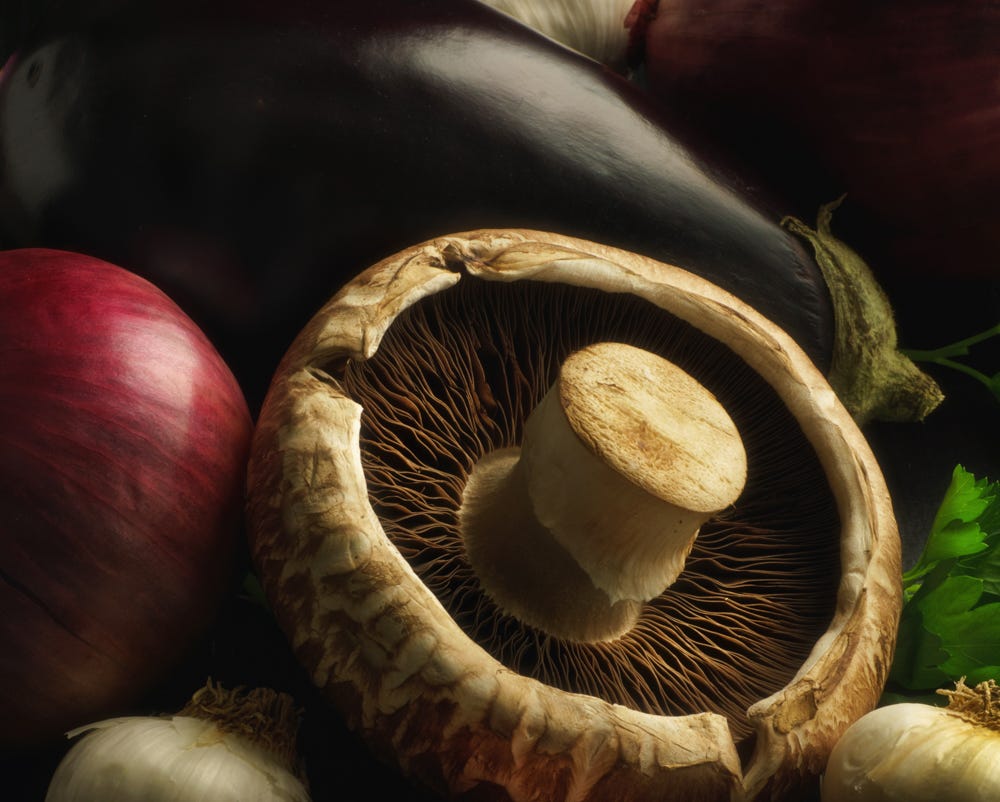Hi, and welcome to my little Substack corner. I write about photography, art, design, and the craft of living creatively. I am glad you are here. Consider subscribing to keep up with what I am doing. I promise not to bore you. If you would like to support my efforts, that would be amazing and so appreciated. Either way, I am super happy you are here.
I love shooting food.
I love teaching others how to do it as well.
Food is one of the more ubiquitous genres that will remain a staple of commercial photography no matter what else happens.
AI can make a burger shot, but it can’t make THE burger shot your client needs.
Stock food shots are not nearly good enough unless you are purchasing premium, and even then, the food is not presented the way it would be at your client’s restaurant or food service company.
When you consider all the ancillary channels that food photography can utilize, you realize that it is as deep as it is wide. And that means many more possible clients for you to serve.
There are quite a few potential clients for food photography beyond the obvious ones, like restaurants and food services. Here’s a breakdown to give you some ideas:
1. Food & Beverage Industry
Restaurants & Cafes: Menu photography, social media, advertising.
Bars & Breweries: Drink and cocktail shots, brewery tours.
Food Trucks: Street food vibes, branding images.
Bakeries & Patisseries: Dessert close-ups, festive specials.
Catering Companies: Event-specific menus, promotional brochures.
Grocery Stores & Supermarkets: Product shots, in-store displays.
Coffee Shops: Latte art, cozy café aesthetics.
Wineries & Vineyards: Bottling process, vineyard landscape, wine tastings.
Fast Food Chains: Promotions, seasonal menu items, digital ads.
2. Retail & Product Brands
Packaged Food Brands: For packaging, e-commerce, and ad campaigns.
Meal Kit Companies: Step-by-step recipes, finished dish photos.
Beverage Companies: Soft drinks, energy drinks, smoothies, specialty teas.
Local Farmers & Artisanal Producers: Farm-to-table visuals, fresh produce.
Kitchenware Brands: Cookware, cutlery, table settings, cooking in action.
3. Hospitality & Tourism
Hotels & Resorts: Dining experiences, breakfast buffets, in-room dining.
Bed & Breakfasts: Homestyle breakfasts, regional specialties.
Cruise Lines: Specialty dining, themed cuisine, exotic drinks.
Event Venues: Wedding catering, corporate event dining.
4. Media & Publishing
Cookbook Publishers: Cover shots, recipe step-by-step, finished dishes.
Food Magazines & Blogs: Editorial spreads, feature articles.
TV Shows & Online Cooking Channels: Recipe demonstrations, food styling.
Advertising Agencies: Creative campaigns involving food or beverages.
5. Health & Wellness
Health Systems & Hospitals: Nutrition programs, patient meals.
Dieticians & Nutritionists: Healthy meal plans, recipe books.
Fitness Centers & Gyms: Protein shakes, supplements, healthy snack options.
Organic & Health Food Brands: Natural ingredients, plant-based products.
6. Corporate & B2B
Corporate Offices: Catering services for events and meetings.
Event Planners: Food for events like weddings, festivals, corporate retreats.
Marketing Firms: Product launches, client presentations involving food.
Co-working Spaces: Café and in-house dining for members.
7. E-commerce & Subscription Services
Online Food Retailers: Product shots for e-commerce listings.
Subscription Boxes: Curated food items, meal kits, specialty snacks.
Farm-to-Door Services: Fresh produce, meat, and dairy products.
8. Educational Institutions
Culinary Schools: Demonstration classes, cook-offs, end-of-term exhibitions.
Colleges & Universities: Dining hall menus, special event catering.
Cooking Workshops & Classes: Instructional step-by-step images, finished dishes.
9. Non-Profit Organizations
Food Banks: Campaigns, donation drives, community meals.
Sustainable Agriculture Initiatives: Organic farms, community gardens.
Local Farmers’ Markets: Promotions, social media campaigns.
10. Technology & Apps
Food Delivery Apps: Menu listings, promotional images, restaurant partners.
Recipe & Meal Planning Apps: Ingredient shots, finished dishes, app visuals.
Kitchen Gadget Startups: Smart cooking appliances, product demos.
That is just a taste… (sorry) of what can be done.
That is a lot of potential clients.
And they can be accessed no matter where you live.
If you are in small towns or rural areas, you have access to food as it is being grown.
If you live in big cities, there are food service manufacturing and corporations.
Lots and lots of possible clients.
For just your food portfolio.
And even more interesting is that food photography can involve highly complex lighting and setups, and extremely simple lighting and sets. The choice is yours to make depending on the style of work you do.
I am going to show you 6 examples of food photography from my Project 52 members, and show you how they shot them.
From sophisticated to dead simple, there is a way to make food photography that makes the mouth water that will appeal to you.
Photos: Anders Eriksson
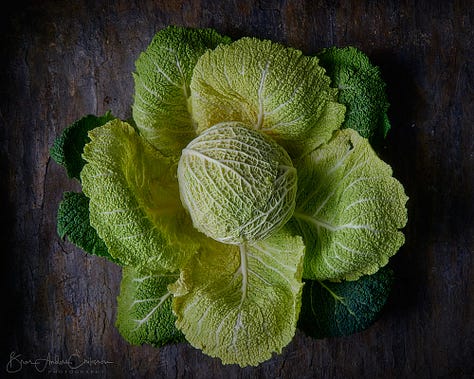
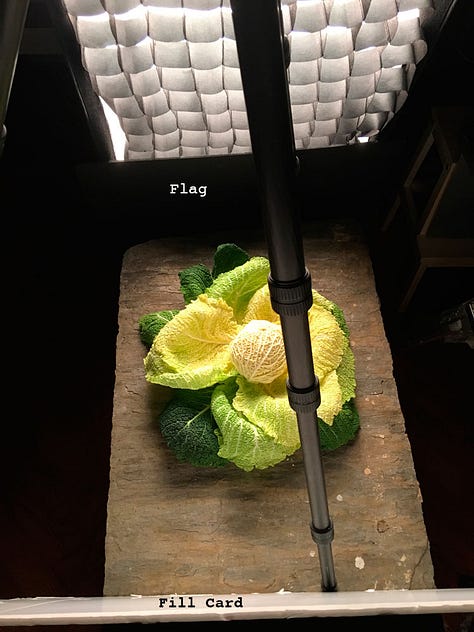
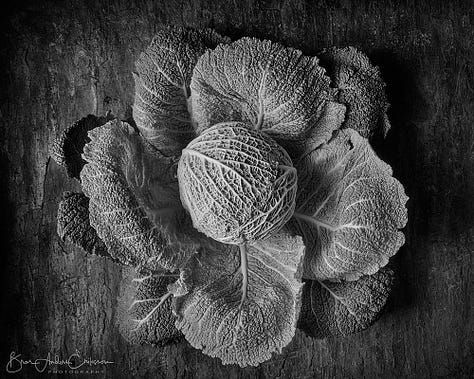
Anders is using a large source in tight to the subject for these cabbage shots. He is not using a fill card on the camera right side, so the shadows grow a bit deeper giving the cabbage dimension. The texture is shown in great detail by the single source, contrasty light.
Photos: Carla McMahon
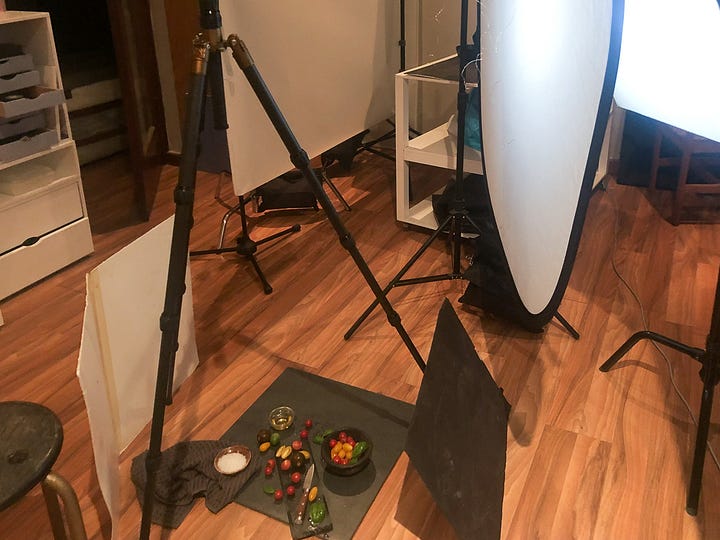

The center diffuser from a 5-In-One Reflector set is used to provide light in the shape and height of a window. Carla is creating a very natural look to the image, a collage of many peppers and props. Note the lovely light on the knife and the glow of the olive oil. Little things make a big difference.
Photos: Carol Rioux
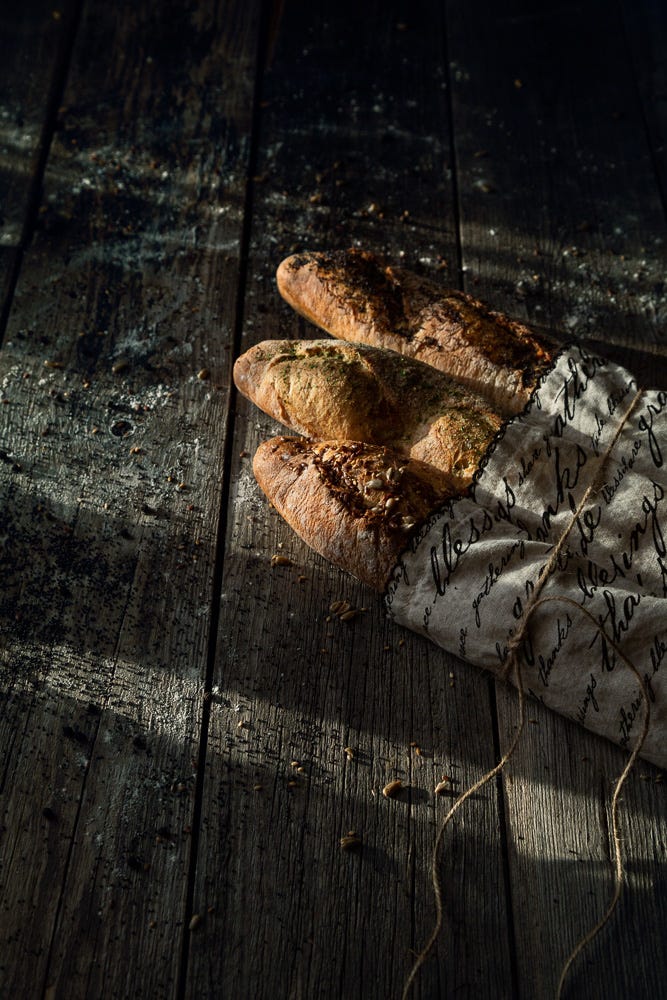

This is simple window light with direct sun. By folding the curtains tightly and clamping them, Carol created shadows that added more drama to the image. The careful propping of barn wood and flour gave the “homestyle” bread context.
Photos: Julie L’Heureux


Even a simple artichoke can be beautifully lit with careful lighting. Julie created an abstract piece of art with the light and repetitive design of the artichoke. A small softbox on the right side is partially blocked by the black card (flag) with negative fill on the shadow side. You can barely make out the black card on the left side of the artichoke. This negative fill lets the darker side go darker, and helps the lighting be even more dramatic.
Photos: Tammy Bogestrand
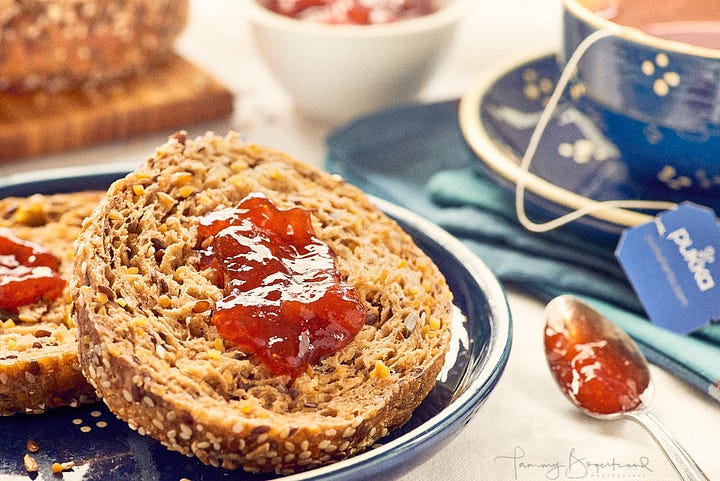
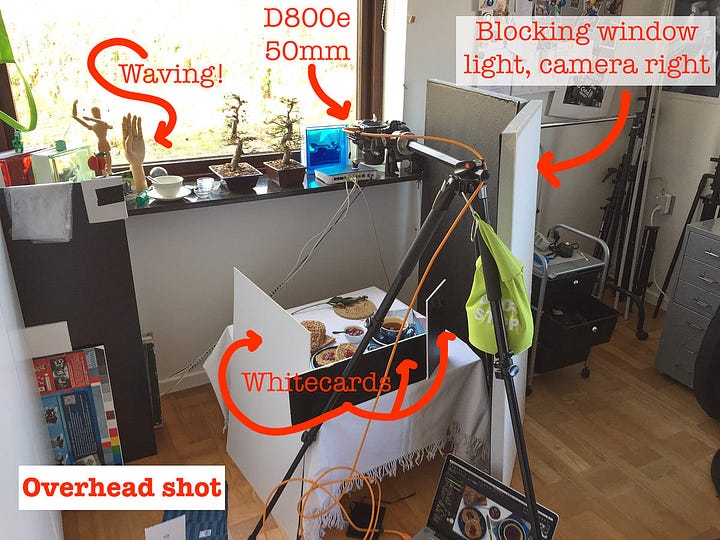
Note that Tammy moved the set farther back from the window. This gives the light a bit more flat feeling that doesn’t blow out the highlights. (Refer to the Inverse Square Law.) Filling the front with white cards gives back the textures and color in the front, while the large flag blocks unwanted light from the light on the right side of her studio. Also, notice the wonderful highlights on the top of jam. This feeling of backlight is very warm and comforting.
Photos: James Kern
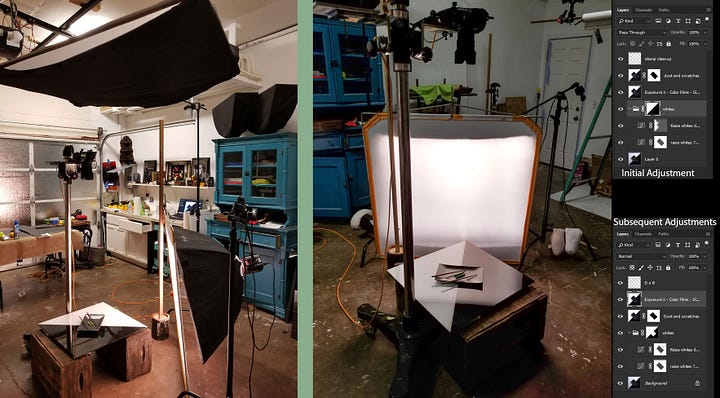

A minimalist shot with massive design elements. James used colored paper to create the graphic pattern and intersected it with the plate and chopsticks. This is the kind of photograph that can make impact with viewers. I love the subtle highlights that create the edges of the plate.
There are some additional perks to shooting food.
You can do it day or night.
You get to eat all the leftovers.
Food never had an attitude on set.
Food shows up on time with no excuses.
You can use inexpensive food for dramatically good photos.
Here are a few ideas from more of my students:
So here’s a plan to get started.
Go to the market and purchase a dozen mushrooms, or a few Brussels Sprouts, or maybe a loaf of ezquisite-made bread.
Find a surface and a window and begin to experiment with white cards, dark cards, mirrors, shiny reflectors, and flags to block the light.
You’ll have a blast, I guarantee.
Food As Art Portfolio Workshop
AN 8-WEEK WORKSHOP FOR TABLETOP PHOTOGRAPHERS
From Shitake Mushrooms to the lowliest turnip, there is much to discover in the realm of food photography. This class will introduce you to many ways of shooting food that you may not have thought of.
Come along with us and make photographs every week exploring the endlessly inspiring art of food and food photography.
All you need is a camera and some light.
When you are ready, here is how I can help you succeed.
Group Mentorship: a small group of photographers who meet to show images, work on their portfolio, and build their businesses with help from a wonderful group. Lifetime membership for one fee.
One-on-one Mentorship: You and me - working together in an intense 6-month push to get you on the way to over $30K in additional revenue. The work we lay down will help you increase and scale your business for years ahead.
Thank you for supporting my work.

